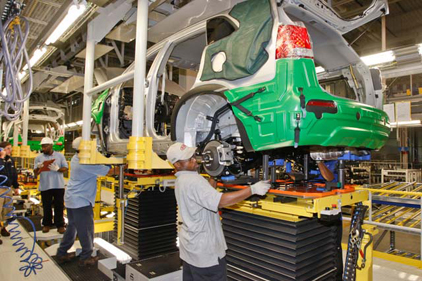Have you noticed the sorry state of quality today? Are you surprised to find that the warranty for your new purchase expired before you opened the box? Have you wondered why consumers are so receptive when resellers push “extended” warranties that only add a couple of years (if that) to the manufacturer’s pathetic coverage? Do your eyes glaze over when you see a company advertising that it is passionate about quality?
Quality, a sister publication to this one, features a columnist also named Jim Smith. He’s worth reading on a regular basis, but I would urge you to check out this column, in particular. As he points out, while everyone seems to agree with the philosophy of Phil Crosby’s famous book Quality is Free, quality does not seem to have improved as a result.
“It is not easy to find many cases where service or product quality is actually better now than it was before,” Mr. Smith writes. “Organizations spend about 20 percent of their sales dollars doing work over or fixing their mistakes!” He then asks the logical question: “If everyone supports quality improvement, why isn’t there an epidemic of everything getting better?”
Why isn’t quality getting better may be an important question, but it’s hardly new. And it wasn’t any less important or novel 20 years ago when Frank Whitehall and I wrote Optimizing Quality in Electronics Assembly: A Heretical Approach (McGraw-Hill Professional Publishing, New York, 1996), based on my Unconventional Wisdom columns in this magazine that began in 1992.
A core theme of both the columns and the book was that quality professionals are as much to blame for poor quality as the executives who tolerate the waste generated by sloppy quality.
Frank and I coined the term “pseudoquality” to refer to the many immensely popular “quality” programs whose “goals are to increase efficiency and impress customers” rather than actually improving quality.
“Pseudoquality programs are extremely dangerous,” we wrote. “They can easily undermine the quality department’s credibility and extinguish any enthusiasm within the company for further quality efforts. They draw away resources that would otherwise be employed in real quality improvement. And, in many cases, they are dishonest.”
As Jim Smith’s Quality column reminds us, Crosby identified three core reasons for the failure of quality:
-
The highest paid and most talented people in a company do not work on improvement.
-
People who understand a subject do not get to help determine the policy for improvement.
- Management just doesn’t understand.
Without denigrating Crosby’s position, Frank and I attributed the sorry state of quality to several other factors, including:
-
Lack of an operational definition for quality. In other words, what is quality? That’s a contentious issue even among quality professionals.
-
Failure to work in a scientific manner. Too many companies fail to master the underlying science of their processes. Without scientific process management, you cannot have the consistency required for process improvement.
-
Unreasonable expectations of benefits from quality improvement. “Quality improvement programs too often are undertaken in the belief that higher quality must translate into greater demand and profits,” we wrote. “[T]his frequently is not true; improved quality many times does not lead to increased demand.”
- Excessive demands on production personnel. “The employees closest to the actual manufacturing and quality evaluation operations are best-positioned to identify problems related to quality and productivity.” Those employees should be defining and implementing corrective actions. However, their abilities to make meaningful contributions are constrained by their knowledge, and effective knowledge requires ongoing education. “Ideally, the necessary education would contain a quasi-apprenticeship for every employee, including design engineers and potential managers,” we wrote. However, “The cost in dollars, time and effort of such an undertaking is so substantial that it can be feasible only where employees remain with the same company for many years. Since few manufacturing companies today display such high levels of employment stability, adequate investment in employee development is rare and most employee participation programs end in disappointment.” And that was the situation 20 years ago—before the great push to move manufacturing offshore.
Is there such a thing as “quality” today? Now, as then, that’s an interesting question. What do you think?

Recent Comments
Helpful for Trainees
Cable Assembly Manufacturers
Huawei for manufacturing?
should have a scanner and then 3D print the repair
IPC-A-610 and IPC-j-std-001